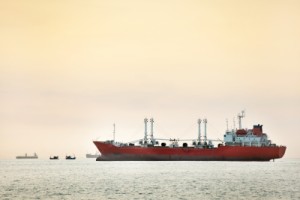 The number of domestic vessels plying Philippine waters increased 8.6% to 22,034 as of June 2015 from 20,280 in the same period last year, according to latest data from the Maritime Industry Authority (MARINA).
The number of domestic vessels plying Philippine waters increased 8.6% to 22,034 as of June 2015 from 20,280 in the same period last year, according to latest data from the Maritime Industry Authority (MARINA).
Total gross register tonnage (GRT) reached 2.784 million, up 1.6% from 2.741 million GRT year-on-year.
Of the total number of vessels, 10,694 were part of the merchant fleet while 11,340 were fishing boats.
Passenger vessels accounted for 6,555 of the aggregate merchant fleet; cargo vessels, 3,051; tankers, 249; tugs, 566; dredgers, 28; yachts, 33; special purpose ships, 16; miscellaneous ships, 78; and other types of vessels, 118.
The number of overseas-based vessels registered under the Philippine flag also grew as of June 2015 reaching 123, 6% more than the 116 registered as of December 2014.
Twenty six were general cargo carriers, 70 bulk carriers, 13 tankers, one roll-on/roll-off, eight livestock carriers, one dry cargo ship, two container carriers, and two multipurpose dry cargo vessels.
The total GRT of Philippine-flagged overseas-based vessels was 2.923 million in June.
Through Memorandum Circular (MC) No. 186, MARINA accredited five new domestic maritime enterprises engaged in bunkering, ship management, and ship agency as of June this year. Five other firms renewed their accreditation.
Under MC 03-2006, or the revised guidelines on the accreditation of domestic shipping enterprises or entities, on the other hand, the agency approved or renewed accreditation of 30 enterprises.
First semester numbers
In the first six months of the year, ships registered by MARINA reached 4,441, 12.3% higher than the 2015 target of 3,956 ships.
For the same semester, MARINA audited 288 companies/ships, 25% below the 385 target and 20.2% lower than the actual 361 audit inspections last year.
The agency’s Enforcement Service inspected 435 vessels for the period. Of the total, 252 of the 376 passenger vessels inspected were found to be non-compliant with MARINA rules and regulations.
For the first half, MARINA issued 11 new or revised policies, rules, and regulations and five MARINA advisories regarding the following: acquiring ships, installing and implementing automatic identification systems on passenger and cargo vessels, and categorizing navigational areas/waters in the Philippines. It also released circulars on the Standards of Training, Certification and Watchkeeping for Seafarers.
The maritime agency likewise assessed the country’s Road Roll-on Roll-off Transport System (RRTS), a network of terminals linked by RORO vessels from Batangas port and on any point in Luzon, Visayas and Mindanao. The RRTS is designed to improve and promote inter-island sea transportation in the Philippines.
Successful nautical highways
The assessment, MARINA noted, sought to evaluate each route; determine the need to rehabilitate, develop, and improve; identify the causes of deterioration; and pinpoint the factors affecting the success or failure in connecting links under RRTS.
According to MARINA’s initial assessment, the Western Nautical Highway and Pan Philippine Highway are the two most successful and dynamic highways under the RRTS. The Eastern Highway, on the other hand, is the most unsuccessful or unproductive because no vessel operates in the area since certain portions of the highway overlap with the Central Nautical Highway and Pan Philippine Highway, particularly portions located in Masbate and Surigao City.
MARINA also identified factors affecting the success and productivity of nautical highways, and these included conditions of port facilities, infrastructure or road conditions going to the port area, proliferation of ports in one municipality, and economic activities or tourist spots in the area.
The agency conducted a market or ocular survey of the Matnog-Allen route. Early this year, Matnog port experienced congestion due to the suspension of RORO operations after a heavy storm. The port also experienced congestion after super typhoon Yolanda hit the country in late 2013.
The Domestic Shipping Service came up with several recommendations to rationalize shipping schedules during peak hours and recommended alternative routes in case passengers and cargo vehicles were stranded at the port of Matnog. These alternative routes include the Bulan Port in Sorsogon, the nearest port in Matnog; and San Isidro Ferry Terminal in the province of Northern Samar, approximately 39 kilometers away from the port of Matnog.
Aside from inspections, MARINA conducted training on coastal law enforcement, safety, security, and environmental protection and deputization of coastal law enforcers at the Zamboanga Peninsula, Basilan, and Tawi-Tawi areas. It also called meetings to enforce and intensify its “Ligtas Byaheng Dagat” program to ensure observance of safety and security measures and efficiency in the country’s water transportation service.
Shipbuilding
For the shipbuilding industry, MARINA conducted the National Shipbuilding and Ship Repair (SBSR) Road Mapping Seminar Cum Workshop in Cebu City that led to the creation of the first national organization for the industry, the Shipyards Association of the Philippines.
At the same time, the agency hosted the International Maritime Organization’s conference on the safety of domestic ferries, where the “Manila Statement” was adopted to acknowledge the urgent need to enhance in certain parts of the world the safety of ships carrying passengers on non-international voyages. MARINA recently conducted public consultations nationwide on the proposed revision of 12 memorandum circulars, a move designed to make these policies comply with the Manila Statement.
Revenue lags 44% behind H1 target
MARINA reported revenue of P492.502 million for the first semester of 2015, 44% below the target of P872.826 million for the period.
Data from MARINA’s latest accomplishment report showed that operating and service revenues, except for income from other services, did not hit targets for the period. Tonnage fees collected in the first half reached P48.936 million, 11% lower than the P55 million target for the period.
In 2014, MARINA earned P713.657 million in revenue. – Roumina Pablo





